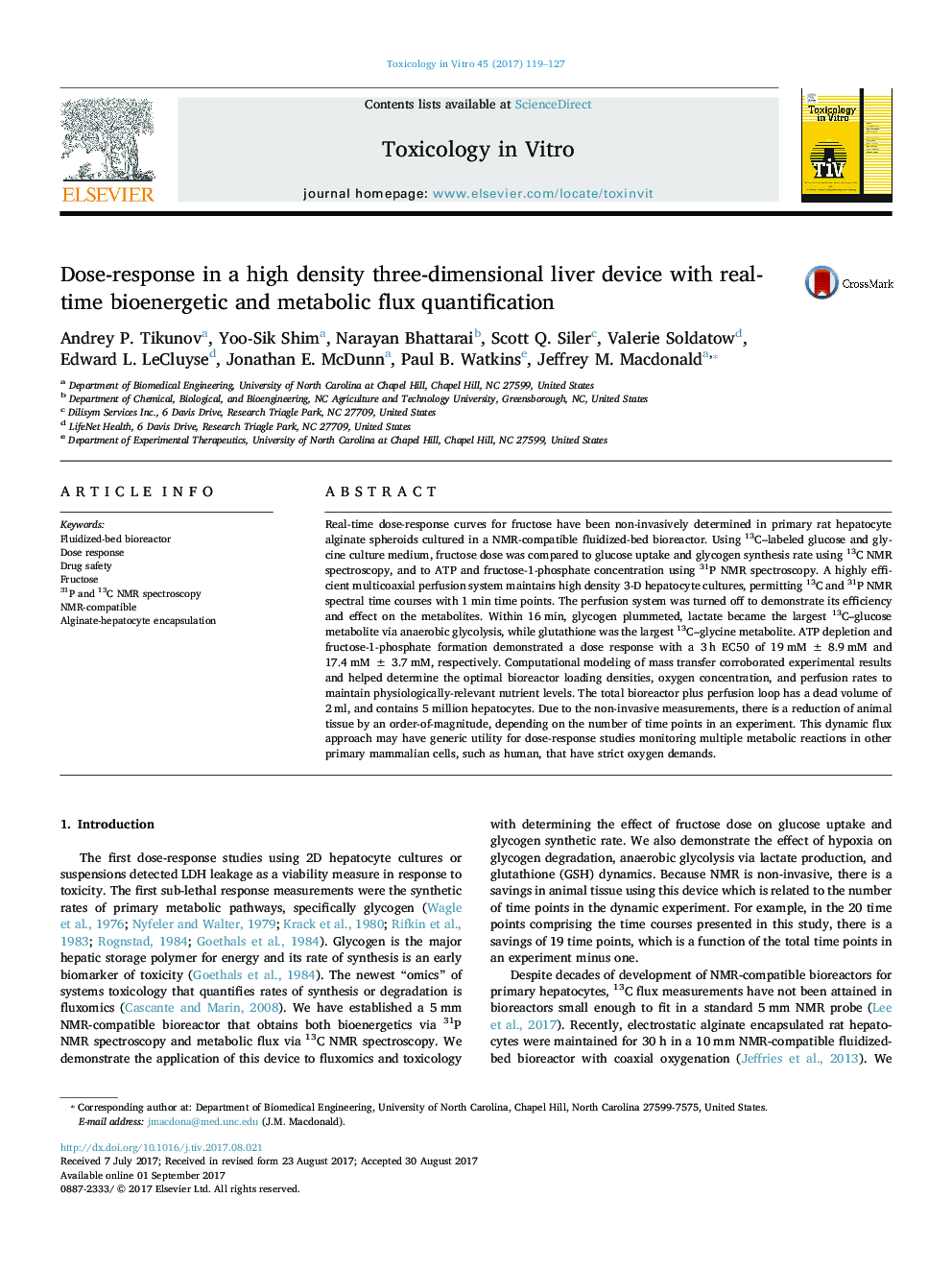| کد مقاله | کد نشریه | سال انتشار | مقاله انگلیسی | نسخه تمام متن |
|---|---|---|---|---|
| 5562611 | 1403430 | 2017 | 9 صفحه PDF | دانلود رایگان |
- Real-time fluxomics in rat hepatocytes in a NMR-compatible fluidized-bed bioreactor.
- A new multicoaxial life support device is described and validated.
- The dose response of fructose on glycogen, lactate, and glutathione synthesis rate.
- Determined glucose uptake & glycogen rate, & ATP and fructose-1-phosphate levels.
- There is a reduction of animal tissue by an order-of-magnitude.
Real-time dose-response curves for fructose have been non-invasively determined in primary rat hepatocyte alginate spheroids cultured in a NMR-compatible fluidized-bed bioreactor. Using 13C-labeled glucose and glycine culture medium, fructose dose was compared to glucose uptake and glycogen synthesis rate using 13C NMR spectroscopy, and to ATP and fructose-1-phosphate concentration using 31P NMR spectroscopy. A highly efficient multicoaxial perfusion system maintains high density 3-D hepatocyte cultures, permitting 13C and 31P NMR spectral time courses with 1 min time points. The perfusion system was turned off to demonstrate its efficiency and effect on the metabolites. Within 16 min, glycogen plummeted, lactate became the largest 13C-glucose metabolite via anaerobic glycolysis, while glutathione was the largest 13C-glycine metabolite. ATP depletion and fructose-1-phosphate formation demonstrated a dose response with a 3 h EC50 of 19 mM ± 8.9 mM and 17.4 mM ± 3.7 mM, respectively. Computational modeling of mass transfer corroborated experimental results and helped determine the optimal bioreactor loading densities, oxygen concentration, and perfusion rates to maintain physiologically-relevant nutrient levels. The total bioreactor plus perfusion loop has a dead volume of 2 ml, and contains 5 million hepatocytes. Due to the non-invasive measurements, there is a reduction of animal tissue by an order-of-magnitude, depending on the number of time points in an experiment. This dynamic flux approach may have generic utility for dose-response studies monitoring multiple metabolic reactions in other primary mammalian cells, such as human, that have strict oxygen demands.
An NMR-compatible 5Â mm glass bioreactor with a multicoaxial perfusion system has been established using alginate encapsulated hepatocytes to non-invasively obtain kinetic parameters, in response to fructose. Using 31P NMR spectroscopy the EC50 of fructose was determined for ATP depletion. Using 13C NMR spectroscopy the rates of 13C-glucose uptake and glycogen incorporation were plotted versus fructose dose, from which EC50s can be determined.214
Journal: Toxicology in Vitro - Volume 45, Part 1, December 2017, Pages 119-127
